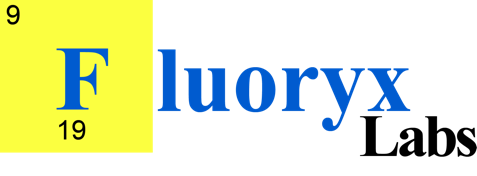INORGANIC FLUOROCHEMICAL REACTION PATHWAYS
Posted by David Offord, Ph.D. on
Inorganic fluorochemicals have many and diverse uses. They are used in the industrial processing of other materials, for example, aluminum, nuclear fuel, gasoline, etc. Inorganic fluorochemicals are also used in the synthesis of several products such as pharmaceuticals, solar panels, toothpaste, lithium ion batteries, rocket fuel, concrete, semiconductors, LCDs, etc. In order to provide an idea of the diversity of organic fluorochemical uses, Fluoryx Labs has assembled the following graphic illustrating the chemical pathways taken to produce many major products that modern society could not live without.
All the reactions start with the ore fluorspar, or CaF2, shown on the left side of the chart. Fluorspar is mined in countries such as the USA, China, Mexico, and South America. Fluorspar is converted to hydrofluoric acid (HF) by reaction with sulfuric acid. From hydrofluoric acid (either aqueous or anhydrous), many reactions are possible which are represented by the branching arrows. Some of the fluorochemicals and reactions shown are dangerous (for example, hydrofluoric acid or the production of gasoline), therefore proper precautions must be taken

